Atomic bombing of Nagasaki during World War II
Atombombe von Nagasaki im Zweiten Weltkrieg
© U.S. National Archives, RG 77-MDH
JPN
nahe Nagasaki
© U.S. National Archives, RG 77-MDH
Lade Bilder...
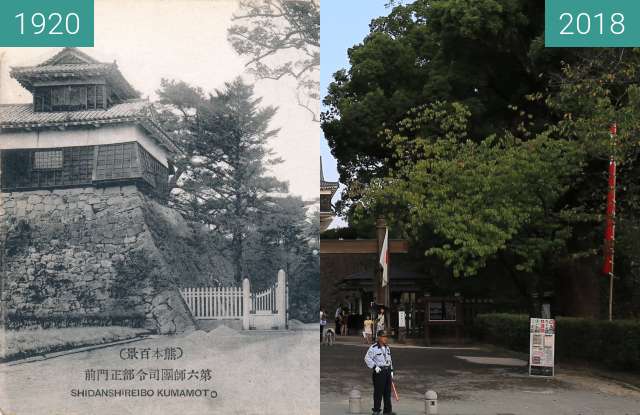
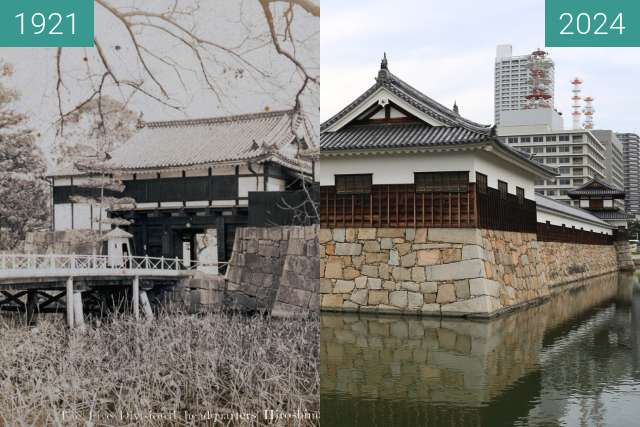
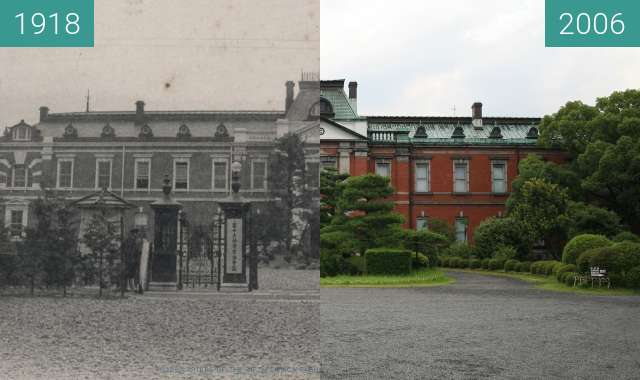
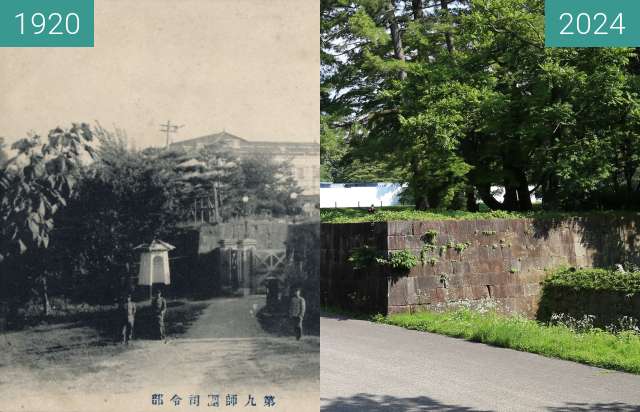

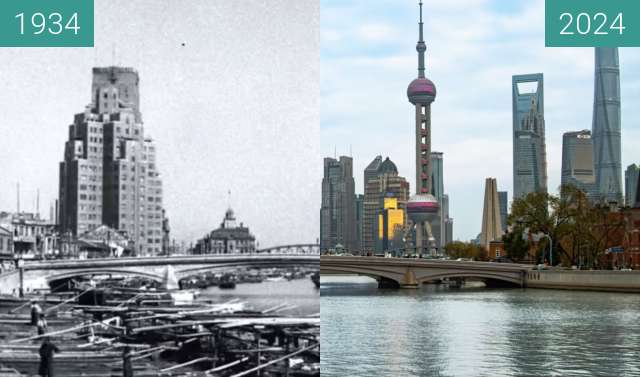
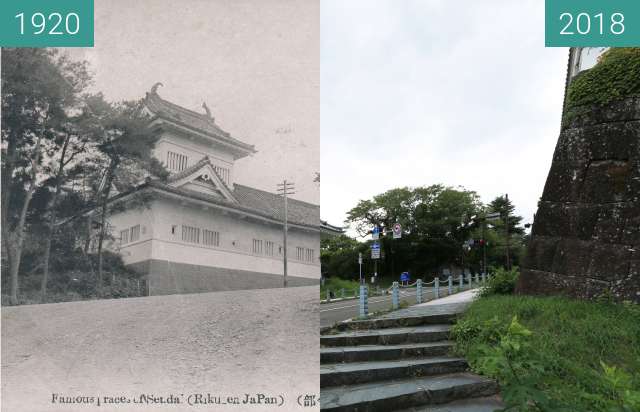
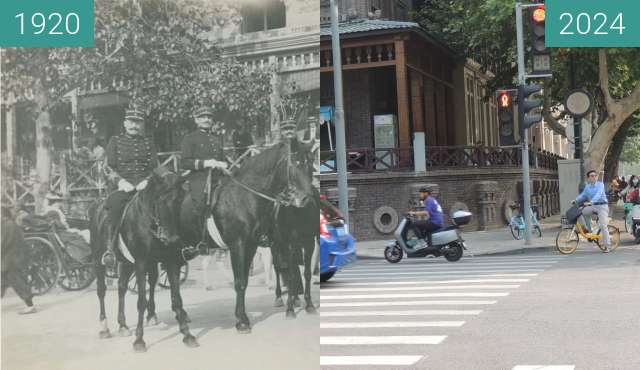
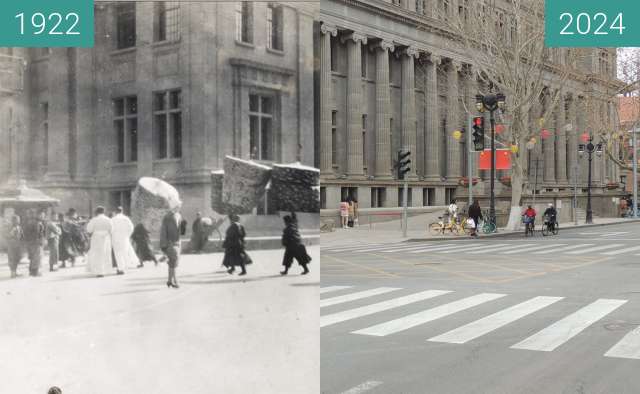

On the day of the nuclear strike (August 9, 1945) the Boeing B-29 Superfortress Bockscar, commanded by Major Charles Sweeney, departed from Tinian's North Field just before dawn, carrying a plutonium bomb, code named "Fat Man".
The primary target for the bomb was Kokura, with the secondary target being Nagasaki, if the primary target was too cloudy to make a visual sighting. When the plane reached Kokura at 9:44 a.m. (10:44 a.m. Tinian Time), the city was obscured by clouds and smoke, as the nearby city of Yahata had been firebombed on the previous day - the steel plant in Yahata also had their workforce intentionally set fire to containers of coal tar, to produce target-obscuring black smoke. Unable to make a bombing attack on visual due to the clouds and smoke and with limited fuel, the plane left the city at 10:30 a.m. for the secondary target.
After 20 minutes, the plane arrived at 10:50 a.m. over Nagasaki, but the city was also concealed by clouds. Desperately short of fuel and after making a couple of bombing runs without obtaining any visual target, the crew was forced to use radar in order to drop the bomb. At the last minute, the opening of the clouds allowed them to make visual contact with a racetrack in Nagasaki, and they dropped the bomb on the city's Urakami Valley midway between the Mitsubishi Steel and Arms Works in the south, and the Mitsubishi-Urakami Ordnance Works in the north. 53 seconds after its release, the bomb exploded at 11:02 a.m. at an approximate altitude of 1,800 feet.
Less than a second after the detonation, the north of the city was destroyed and 35,000 people were killed. Among the deaths were 6,200 out of the 7,500 employees of the Mitsubishi Munitions plant, and 24,000 others (including 2,000 Koreans) who worked in other war plants and factories in the city, as well as 150 Japanese soldiers. The industrial damage in Nagasaki was high, leaving 68–80% of the non-dock industrial production destroyed. It was the second and, to date, the last use of a nuclear weapon in combat, and also the second detonation of a plutonium bomb.
https://en.wikipedia.org/wiki/Nagasaki
Am Tag des nuklearen Streiks (9. August 1945) verließ die von Major Charles Sweeney kommandierte Boeing B-29 Superfortress Bockscar kurz vor Tagesanbruch Tinians North Field mit einer Plutoniumbombe mit dem Code "Fat Man".
Das primäre Ziel für die Bombe war Kokura, das sekundäre Ziel war Nagasaki, wenn das primäre Ziel zu wolkig war, um eine visuelle Sichtung vorzunehmen. Als das Flugzeug um 9.44 Uhr (10.44 Uhr Tinianer Zeit) Kokura erreichte, war die Stadt von Wolken und Rauch verdeckt, da die nahe gelegene Stadt Yahata am Vortag von einem Brand getroffen worden war - das Stahlwerk in Yahata hatte auch ihre Die Belegschaft zündete absichtlich Behälter mit Kohlenteer an, um zielgerichteten schwarzen Rauch zu erzeugen. Aufgrund der Wolken und des Rauches und des begrenzten Treibstoffs konnte das Flugzeug keinen Bombenangriff auf das Bild ausführen und verließ die Stadt um 10:30 Uhr, um zum zweiten Ziel zu gelangen.
Nach 20 Minuten traf das Flugzeug um 10:50 Uhr über Nagasaki ein, aber die Stadt war auch von Wolken verdeckt. Der Treibstoff war so knapp, dass die Besatzung nach einigen Bombenangriffen, ohne ein sichtbares Ziel zu erreichen, gezwungen war, Radar einzusetzen, um die Bombe abzuwerfen. In letzter Minute ermöglichte das Öffnen der Wolken den visuellen Kontakt mit einer Rennstrecke in Nagasaki und sie warfen die Bombe auf das Urakami-Tal der Stadt auf halbem Weg zwischen den Mitsubishi Steel and Arms Works im Süden und der Mitsubishi-Urakami-Verordnung Arbeitet im Norden. 53 Sekunden nach ihrer Freisetzung explodierte die Bombe um 11:02 Uhr in einer Höhe von ungefähr 1.800 Fuß.
Weniger als eine Sekunde nach der Detonation wurde der Norden der Stadt zerstört und 35.000 Menschen wurden getötet. Unter den Todesopfern befanden sich 6.200 der 7.500 Beschäftigten des Werks von Mitsubishi Munitions und 24.000 andere (einschließlich 2.000 Koreaner), die in anderen Kriegsbetrieben und Fabriken der Stadt arbeiteten, sowie 150 japanische Soldaten. Die industriellen Schäden in Nagasaki waren hoch und ließen 68–80% der nicht im Dock produzierten Industrie zerstört. Es war der zweite und bis heute letzte Einsatz einer Atomwaffe im Kampf und auch die zweite Detonation einer Plutoniumbombe.
https://en.wikipedia.org/wiki/Nagasaki